Material Collection
Animal
Humans aren't the only creatures that can make building materials. The products in this collection are made using materials produced by animals. With their natural performance properties, these products can offer alternatives to many toxic additives.
Below are a few examples of products that meet our rigorous evaluation. For further help, scroll down to "Spec Guidance”.
Animal
8 products
About Our Collections
The goal of our collections is to help promote transparency in the material ingredients of building products by fostering knowledge and awareness of products and materials for which life-cycle information is available, and that have environmentally, economically, and socially preferable life-cycle impacts.
Keep an eye out for the following symbols:
A Healthier Affordable Building Product
Products with the designation of "Healthier & Affordable" were specified and installed in at least one of our Case Studies of healthier affordable housing.
Available at the Donghia healthier Materials Library
The Donghia healthier Materials Library library is open to Parsons student and faculty. Learn more about access and opening hours here.
Low Embodied Carbon
“Embodied Carbon” is the total amount of carbon emitted during the process of making a material. *HML refers to a manufacturer's EPD to determine whether a product's A1-A3 carbon emissions falls within HML's threshold for Low Embodied Carbon.
New Product
This product has been added to the collection within the past six months.
Product in Development
Products with this designation identify they are currently scaling or only available in markets outside of the building industry. they could be experimental or in use in capsule collections.
Available in the EU
Products with this designation are currently available only in the European Union and identified as being an exemplary healthy option in the respective product group.
Ingredient Disclosures
There are several ways of evaluating a material’s health that we include with product information. Disclosures are reports by manufacturers about product ingredients, impacts, or other attributes.
Key Disclosures include:
Health Product Declaration (HPD)
A voluntary technical specification for reporting information on product contents and associated health information, intended to be the health-analogue to Environmental Product Declarations (EPDs).
Declare Label
Declare is a transparency platform and product database that answers three questions:
1. Where does a product come from?
2. What is it made of?
3. Where does it go at the end of its life?
Environmental Product Declaration (EPD)
A standardized format for communicating the environmental effects associated with a product’s raw materials extraction, energy use, chemical makeup, waste generation, and emissions to air, soil, and water.
Safety Data Sheet (SDS)
A reporting format that provides basic information about a material’s chemical ingredients, the potential safety hazards to installers, and recommended practices for installation.
USDA Certified Biobased Product Label
Managed by the U.S. Department of Agriculture (USDA), the goal of the BioPreferred Program is to increase the purchase and use of biobased products.
Other
| Manufacturer | Product | Ingredient Disclosures |
|---|---|---|
| Havelock Wool | Wool Batt Insulation |
Wool Batt InsulationAvailable At the Donghia Materials LibraryLow-Embodied Carbon MaterialSheep's wool provides a healthy and comfortable choice for insulation. Wool is naturally flame resistant. Additionally, wool's unique structure (a hydrophobic exterior and hydrophilic interior) allows it to absorb up to 35% of its weight in moisture from a room. When used as insulation, this gives wool the unique capacity to manage both humidity and temperature. Batt insulation requires the material to hold its shape. Traditional batts are held together with chemical additives. Havelock Wool's uses needle punching to hold their product together, avoiding toxic chemicals. Per Havelock's EPD, this product meets HML's criteria for low embodied carbon. Havelock's wool insulation are produced in Reno, NV, making its application most impactful on projects in western United States. *Note: Havelock's Loose Fill Insulation has R values of 4.3 and also meets HML's criteria for low embodied carbon. CategoryInsulation / Fibrous, Cellulosic, Granular, WoolManufacturerHavelock Wool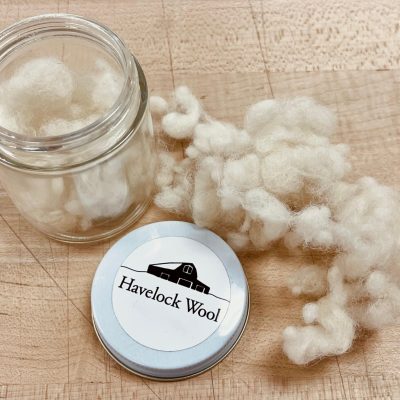
Material composition*Wool, Boric Acid *as reported by the manufacturer AVAILABLE SIZING15.5" wide rolls, available in 2", 3", and 5.5" thicknesses CERTIFICATIONS & DISCLOSURES
Health Product Declaration (HPD)
Declare Label
Environmental Product Declaration (EPD)
Safety Data Sheet (SDS)
USDA Certified Biobased Product Label
Other
Last UpdatedOctober 23, 2025 |
| Cortadoria | Rabbit Hatters Fur |
Rabbit Hatters FurAvailable At the Donghia Materials LibraryCortadoria, a company based in Portugal, uses the surplus from the rabbit meat industry to source their super-soft rabbit fur. Their Rabbit Hatters Fur is Cradle to Cradle Gold Certified. The product is chemical-free, avoiding certain harmful additives that are traditionally used to wash and degrease fur. Because the material is diverted from landfills, and because of the minimal energy required to process rabbit skins, Cortadoria’s Rabbit Hatters Fur provides a sustainable alternative to traditional furs and hatting materials. Note: The C2C certification has expired and will not be recertified. The manufacturer confirms that, however, the Cradle to Cradle vision remains the inspiration and guidance of the company. CategoryTextile, FurManufacturerCortadoria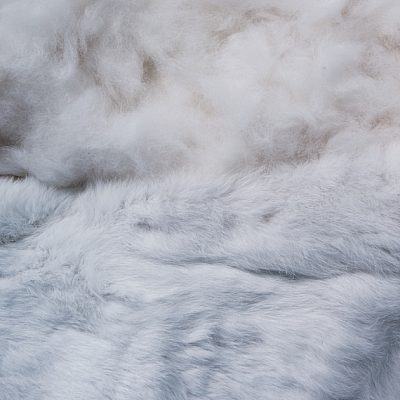
Material composition*Rabbit Fur *NOTE: Potential additives to the rabbit fur are unknown. The product is Cradle to Cradle certified." *as reported by the manufacturer CERTIFICATIONS & DISCLOSURES
Health Product Declaration (HPD)
Declare Label
Environmental Product Declaration (EPD)
Safety Data Sheet (SDS)
USDA Certified Biobased Product Label
Other
Cradle to Cradle | Gold
Last UpdatedOctober 26, 2022 |
| Marléne Huissoud | Honeybee Bio Resin |
Honeybee Bio ResinAvailable At the Donghia Materials LibraryPropolis is a biodegradable resin that honey bees collect from different trees and use as a sealant for unwanted open spaces in the beehive. Its color depends of the forests and botanical sources used in the collection by the honey bees. The most common one is brown, but there are plenty of variations in colors and properties. This particular black propolis is from rubber trees. *NOTE: This material is currently sourced from only 500 beehives, yielding only 30-50 kilograms per year. It is thus a very precious and unique material. CategoryPourables and Aggregates, PropolisManufacturerMarléne Huissoud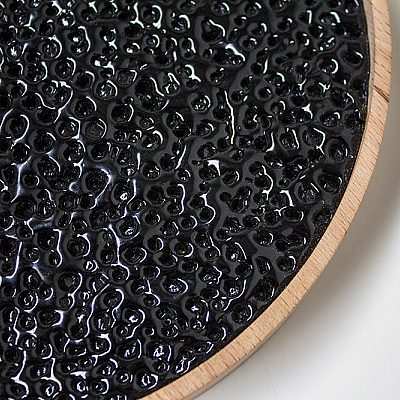
Material composition*The propolis, at its first stage, is a mix of between 50 to 150 different components (wax, balsams, resins, pollen, essential oils…). Refining by boiling in water allows the impurities to leave the propolis and be used as a precious finish on art pieces and furniture. *as reported by the manufacturer CERTIFICATIONS & DISCLOSURES
Health Product Declaration (HPD)
Declare Label
Environmental Product Declaration (EPD)
Safety Data Sheet (SDS)
USDA Certified Biobased Product Label
Other
Last UpdatedFebruary 19, 2025 |
| Bolt Threads | Microsilk |
MicrosilkAvailable At the Donghia Materials LibraryBolt Threads' Engineered Silk is biofabricated by mimicking the DNA in Spider Silk. They develop proteins inspired by the DNA (no spiders are actually involved) and put them inside of yeast. The yeast produce silk protein in a liquid form during fermentation—very much like the beer-making process. After some processing, the liquid silk protein can be turned into fiber through wet-spinning, which is the same way fibers like acrylic and rayon are made. CategoryTextile, YeastManufacturerBolt Threads
Material composition*Sugar, Water, Salts, Yeast *as reported by the manufacturer AVAILABLE SIZINGN/A CERTIFICATIONS & DISCLOSURES
Health Product Declaration (HPD)
Declare Label
Environmental Product Declaration (EPD)
Safety Data Sheet (SDS)
USDA Certified Biobased Product Label
Other
Last UpdatedSeptember 18, 2019 |
| Moore and Giles | Terra Olive Green |
Terra Olive GreenAvailable At the Donghia Materials LibraryMoore & Giles’ Olive Green Leathers are aniline and crafted with wet-green® organic tanning agents. The dye is made from pure olive leaf extract which is a byproduct from olive production where these leave would traditionally be burned. The product is LBC Red List Free. CategoryTextile / Leather, BovineManufacturerMoore and Giles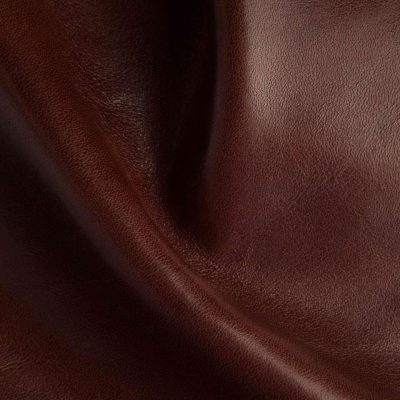
Material composition*Collagen ( Animal Skin), Water, Olive Leaf Extract (Oleuropein) Tanning Agent, Fat Oils: 9-Octadecenoic acid, Lecithins, C18-C50 branched cyclic and linear hydrocarbons- distillates, Dye: Sulfuric acid disodium salt *as reported by the manufacturer COLORSavailable in various colors CERTIFICATIONS & DISCLOSURES
Health Product Declaration (HPD)
Declare Label
Environmental Product Declaration (EPD)
Safety Data Sheet (SDS)
USDA Certified Biobased Product Label
Other
Intertek Sustainability
Additional DocumentsLast UpdatedNovember 18, 2025 |
| TÔMTEX |
TômTex
|
TômTexProduct in DevelopmentTOMTEX is a leather alternative made of chitosan, an abundant biopolymer, using mushrooms (Series M) and seafood waste (Series WS) as the feedstock. TOMTEX has 100% Biobased Content and has been awarded the USDA Certified Biobased Product Label in the BioPreferred® Program. CategoryTextile, BiobasedManufacturerTÔMTEX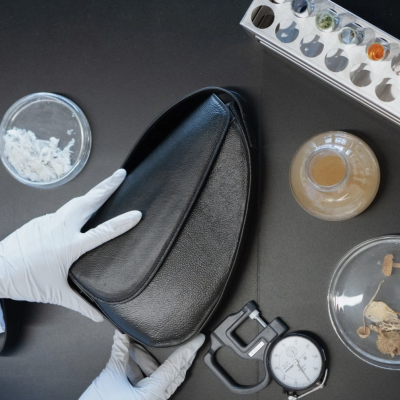
Material composition*Chitin *as reported by the manufacturer CERTIFICATIONS & DISCLOSURES
Health Product Declaration (HPD)
Declare Label
Environmental Product Declaration (EPD)
Safety Data Sheet (SDS)
USDA Certified Biobased Product Label
Other
Last UpdatedJanuary 14, 2025 |
| Allied Feather + Down | Untreated Down by the Pound |
Untreated Down by the PoundDown is a byproduct of the poultry industry. It can be used for furniture cushioning in place of plastic-based down alternatives or other petroleum-based cushioning products that offgass harmful fumes. Allied Feather + Down works directly with poultry farmers to increase supply chain visibility and to ensure humane sourcing. The company is Responsible Down Standard certified, which entails audits from farming practices to manufacturing. Critically, it avoids farms that practice force feeding and live plucking. CategoryFeather, DownManufacturerAllied Feather + Down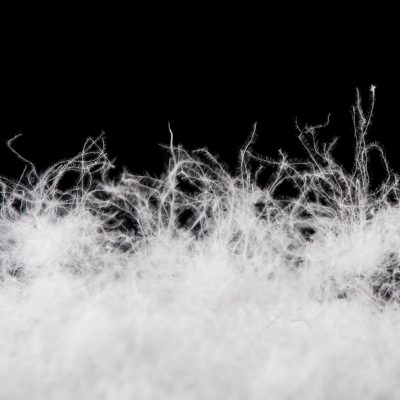
Material composition*Down feathers 100% *as reported by the manufacturer CERTIFICATIONS & DISCLOSURES
Health Product Declaration (HPD)
Declare Label
Environmental Product Declaration (EPD)
Safety Data Sheet (SDS)
USDA Certified Biobased Product Label
Other
Additional DocumentsLast UpdatedMarch 18, 2025 |
| Traditional Tanners |
Traditional Tanners
|
Traditional TannersProduct in DevelopmentTraditional Tanners is working to re-popularize traditional, natural tanning methods that use plant tannins, woodsmoke, alum, and natural oils to help accelerate the tanning industry's transition away from chrome and other toxic chemicals. They are Native owned and their sheepskin tanning is certified organic by Oregon Tilth to US NOP organic standards. They are the only certified organic tannery in the US. CategoryTextile, FurManufacturerTraditional Tanners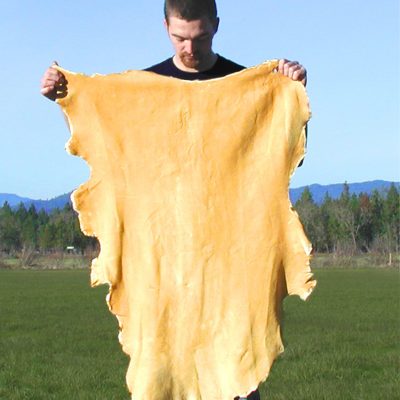
Material composition*Tannin from Mimosa or Tan Oak Bark, Salt, Vinegar for conditioner, Citric Acid, Emulsion of Egg Yolks and Olive Oil, Fish Oil *as reported by the manufacturer CERTIFICATIONS & DISCLOSURES
Health Product Declaration (HPD)
Declare Label
Environmental Product Declaration (EPD)
Safety Data Sheet (SDS)
USDA Certified Biobased Product Label
Other
Last UpdatedMarch 06, 2025 |
The products in this collection have all been evaluated holistically for their contents and performance. To be considered, the product must have a primary ingredient (by volume) that is derived or harvested from animals or an animal-derived substance that plays a critical role in the product’s performance or manufacturing avoiding additives harmful to human and planet.
All products are evaluated for embodied carbon {kg of CO₂ eq /square meter) if (LCA) and (EPD) documentation is available. Those under 5 kg of CO₂ equivalent per square meter earn the HML Standard for Low Embodied Carbon (LEC) and are clearly marked.
Spec Guidance
Inquire with manufacturers for transparency and LCA information as much as possible. Materials new to the market may not yet have certifications and disclosures and often are made proprietarily.
Avoid adding petrochemical finishes, chemicals and dyes to animal-based materials which release toxins during manufacturing and prevent biodegradability.
Capitalize the inherent qualities of animal products such as stain resistance, climate control, thermal qualities. Sheep wool, e.g., has an inherent stain and water repellency due to Lanolin in the sheep's fur and the curled form of each hair.
Consider the impacts of animal farming and feed, especially land use and its impacts on natural ecologies.
Opt for products which consider animal wellbeing. Look for standards to confirm animal safety such as the Responsible Mohair Standard, Responsible Alpaca Standard, Responsible Down Standard and Responsible Wool Standard.
Opt for materials which are byproducts of the other industries.
Look for materials grown from animal proteins, like collagen.
Updated February 27, 2018
More Collections
Join Our Academic Network
Get Access to our carefully researched and curated academic resources, including model syllabi and webinars. An email from an academic institution or a .edu email address is required. If your academic institution does not use .edu email addresses but you would like to join the network, please contact healthymaterialslab@newschool.edu.
Already have an account? Log in